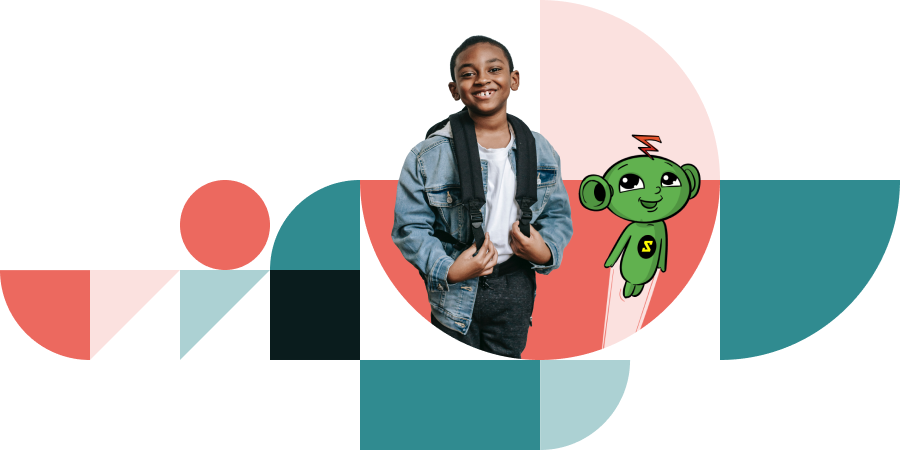By: Mimi Seeley

It’s that time of year again: notebooks, binders, and pencil pouches in vibrant colors and designs line the entryway of store aisles across the country. “Back to school” is upon us. Some of you may have been back to school for a week or two already.
As a former educator, I always felt equally excited and nervous leading up to the first week of school. I could not wait to meet my students, and I planned all sorts of fun “get to know you” activities for us to do together. I was also extremely anxious about how that first day might unfold. Thoughts like, “What if, over the summer, I have somehow forgotten how to teach?” and “When that 8 a.m. bell rings, will I still know what to do?” raced through my mind.
As we approach the beginning of another year, I want to remind you of something: your students are both excited and nervous, too—you are in this together. I encourage you to take this first week of school slowly and use it to foster relationships, begin to develop community, put routines into place, and take care of yourself in the process. We are here to help!
We recently launched our newest edition of Harmony on our online portal, Harmony Third Edition. We have The First Ten Days of Harmony, designed to assist you in establishing routines to support the use of Harmony’s Everyday Practices and create a strong community within your classroom through fun and interactive activities.
On Day One of the First Ten Days of Harmony, we provide detailed instructions on introducing the first two steps of the Harmony Everyday Practice of “Meet Up.” To begin, you will have your students practice “greeting” one another with our “25 Ways to Say Hello.” From there, you will implement the “Sharing and Responding” portion of “Meet Up.” You could model “sharing” by telling the class a little about yourself and how you felt as you prepared for this first day with them. You can then invite students to share or offer up responses. We have provided several example responses that students can use if they struggle to produce ideas. With regular practice, your class is sure to become expert communicators!
As you move through the first couple of weeks, you will create Class and Personal Harmony Goals while simultaneously introducing the last two steps of “Meet Up”: “Checking In” and “Connecting.” They allow you to gradually build upon these practices, firmly establishing them at the beginning of the school year.
In addition to “Meet Up,” you will introduce the Everyday Practice of “Buddy Up” on that first day, using a Quick Connection Card activity. An example of an initial “Buddy Up” activity would be to play “How Many Can You Name?” and have buddies work together to list as many of their favorite things as possible!
Finally, The First Ten Days of Harmony’s Building Community unit also offers quick mini-lessons to build connections and relationships. In the mini-lessons, you use the storybooks to introduce our beloved character Z and all the Clubhouse friends. You also get to play games, like the Commonalities Game, to help students learn more about one another.
As you move into Unit 1, the focus will shift from “Building Community” to “Being My Best Self.” In this unit, students start exploring emotions and the fact that we all have them, which connect to our thoughts and contribute to our actions. Students will learn the importance of paying attention to their emotions and the emotions of their peers as a means of being their best selves.
As a former first-grade teacher, I am particularly interested in Unit 1, Lesson 1: All About Emotions. In this lesson, students play a charades-style emotion game where they can act out various emotions with their buddy, who then guesses the portrayed emotion. This activity allows students to begin practicing identifying emotions and recognizing that we all display our feelings a little differently—such awareness is a crucial component of a strong community.
The unit progresses with students learning about situational influence over thought and emotion; how thoughts, emotions, and actions work together; strategies to support emotional regulation; and how employing a growth mindset and flexible thinking can empower them as individuals. What an impressive way to start the year!
In addition to this focus on developing community and establishing a routine, through the first few weeks (and the entire school year, really), you must prioritize filling your cup. Our 2019 National University Teacher of the Year, Tom Whisinnand (aka Mr. Whiz), has some great advice on this:
“Starting another school year can be a stressful time. There are many tasks that need to be accomplished and there is limited time to accomplish them. Starting a year by keeping YOUR personal worth in mind is mega-important! Teachers MUST look after their own well-being. Just as we set up routines in our classrooms that empower students to embrace healthy learning, we MUST also start the year with intention regarding our personal well-being.”
Additionally, he shares his tips for all-important educator self-care during the upcoming school year.
“During this upcoming year, I will be looking after my own well-being in the following ways: 1) I will be visiting a gym on a regular basis; 2) I will create and maintain professional/personal work boundaries, AND 3) I will engage in a creative activity (painting/writing/drawing/producing YouTubes) at least once during any given weekend.”
Mr. Whiz is spot-on. You need to consider how you will maintain your own mental, emotional, and physical health during what is often a chaotic time.
We at Harmony wish you a fabulous first week—and month—back at school! It is okay to be nervous while also welcoming all the excitement. Do not forget to check out harmony-academy.org for professional learning opportunities happening throughout the month. We are here to support you.
Mimi Seeley is the Client Success Associate for Harmony Academy.